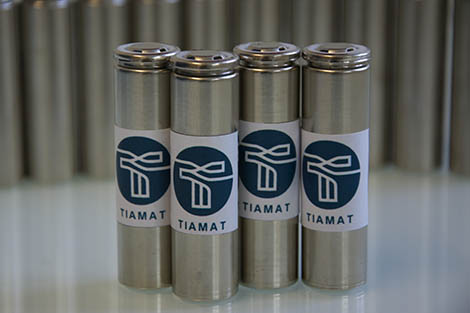By Jean-Jacques DeLisle, contributing writer
Sodium, a more stable element than lithium, is about to hit the battery stage. Sodium offers infinite potential to the storage and manipulation of energy with many distinct advantages over lithium, including that sodium-ion batteries should be less expensive and charge exponentially faster. French startup Tiamat has recently formed with the intention to produce functional, industry-standard sodium-ion batteries, aiming to make them available in markets by 2020. They already have several tens of functional prototypes.
The idea of using sodium-ion in batteries is nothing new, and in fact, it has been in existence since the 1980s. French research network, RS2E, was opened by CNRS in 2015 with the task of creating these sodium-ion batteries, and just two years later, their researchers and scientists manufactured their first prototypes. More impressive is that it took researchers at CNRS only six months for a functional prototype to be assembled after the initial development of sodium-ion energy distribution was discovered.

Tiamat’s sodium-ion batteries. Image source: CNRS.
Sodium-ion batteries are not only potentially low-cost but also offer an extremely high energy storage potential. They are expected to have a lifespan of about 10 years, as opposed to the three- to four-year life expectancy of lithium-ion batteries. This is a huge jump. Not only do they last longer, but they can charge up to 10 times faster and discharge up to 10 times slower, research has shown. These are major advancements and can be expected to have long-lasting effects on the scope of energy as a whole.
Despite the multitude of benefits that sodium-ion batteries offer, though, lithium-ion is currently the preferred choice, especially for portable applications, because sodium-ion batteries are typically heavier than equivalent lithium-ion batteries. Yet the abundance and availability of sodium might lead one to believe that in the near future, lithium-ion batteries could eventually be made obsolete. Sodium is present in 2.6% of Earth’s crust, whereas lithium is only found in .06%. The element lithium is only found in three countries, whereas sodium is found all over the world. You can get sodium from the waters and lands of every country and even from mines deep below their surfaces.
Tiamat claims that production of sodium-ion batteries on a mass scale could begin as early as 2020. The intention of the startup, however, is not to dethrone lithium batteries and become the new dominant technology, even though its availability would make it much less expensive and more practical. Instead, the aim for sodium-ion batteries is to be used in applications in which their long-term storage of energy and charging ability are more important than weight. Sodium-ion batteries could be used, for instance, to build electric vehicles that can be recharged 10 times faster than today. They can also be used to store solar or wind energy for long spans of time. Long-term storage of green energy would allow the power grid to remain stable despite seasonal fluctuations in energy production. This ability to harness energy promises to become increasingly more useful.
As the world continues to shift toward green energy, long-term energy storage becomes a more and more essential need. This new configuration of batteries could bring sodium ion into the midst of the tech war that is raging and also solve a large portion of the energy problems around the globe.
Advertisement
Learn more about Electronic Products Magazine





